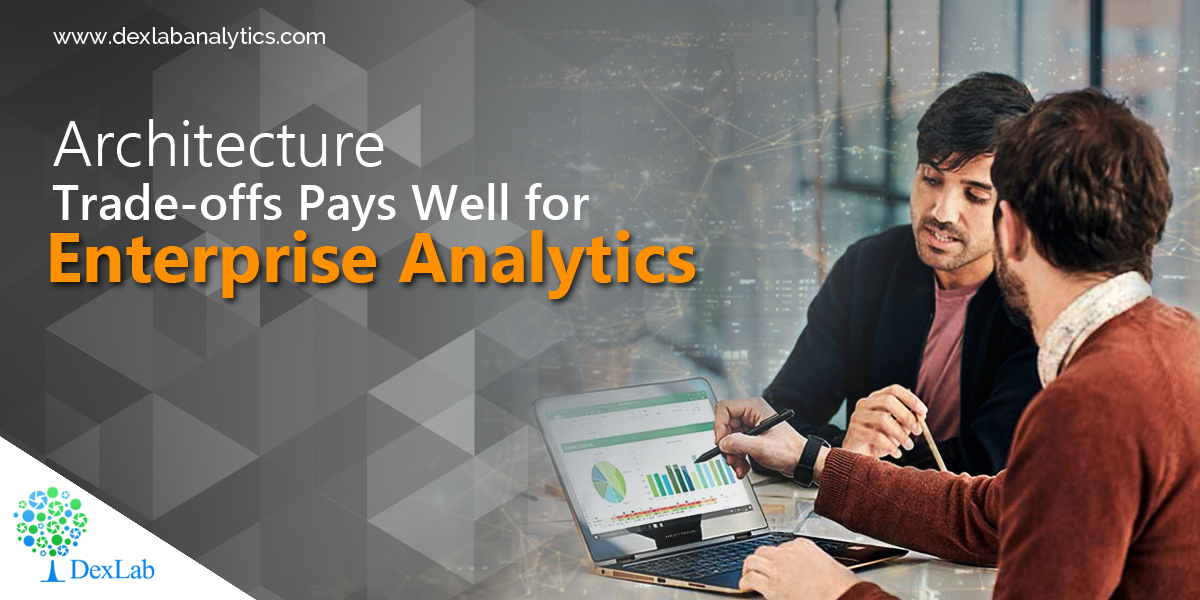Today, owing to an explosion of technology options, determining which analytics stack to adopt takes into account a streak of architectural trade-offs. Over the years, with our experience and expertise we have learnt the most crucial aspect of creating sound analytics systems and pleasing customers with improved digital solutions – is the location where data is to be stored and processed, and the different types of databases to use so that only the right people gain access to it.
Opt for a comprehensive data analyst course Delhi NCR from DexLab Analytics.
Data Storage
Data can sprout up from anywhere, literally. To begin our discussion, it is important to understand that information flows and grows. Once the analysts get a grip on this, they can decide whether they should think of accumulating and processing feeds of data right from the source, or whether to pull up data in a well-administered repository, like a data lake, for easy processing.
Remember, each of the options comes with its own pros and cons – picking up data directly from the source reduce the pressing need for substantial storage infrastructure, but at the same time double the load on the network. On the other hand, hoarding data in large data lakes will result in the accumulation of excess information that might never be needed, automatically slowing down the process of analysis and wasting valuable storage capacity.
Data Management
After deciding the place where data can live, attention may finally be diverted to the way it’s to be managed. There are a whole lot of determining factors, when it comes to picking a veritable database stack like the type, quantity and formatting of data and how data is going to be used.
For further clarifications, take a look down:
- In-memory analytics like SAP HANA or SAS solutions excels in reducing the query time from hours to minutes for quicker data analysis
- Open source tools like NoSQL or Hadoop powers up faster analysis of trends and hypothesis testing
- For quick enablement of data-driven workflows, preprocessing and cleanups, data management architectures and cloud-based streaming, including no-ops models like AWS Lambda are your to-go option.
Balancing of business criteria is the need of the hour. Weigh timeliness, specificity, accuracy and value of results against data-based criteria like volume, velocity and variability, because standardization of technologies is of substance here.
Data Accessibility
Now, let’s address the accessibility issue of data – who is able to access it and who are the ones denied. It is here that the data architecture and information security architecture fuses, triggering questions like how to cordon off the perimeter, how to tackle identities and roles, what data is to be encrypted, what is the way to enable mobile data access and many more.
Subsequently, concluding the best analytics architecture beseeches a string of tradeoffs relating where data is to be stored, the way of processing and how it is to be secured. It is advisable to include business analysts too, along with data architects because each trade-off influences business decisions at a large scale, hence the decision-makers just can’t be ignored.
No matter how technical an analysts’ architecture decision may sound, it has to be tied up to a proper business goal achievement. In this manner, an enterprise can optimize the architecture tradeoffs to the fullest while tuning in the organization with the advances of deep learning technology.
Learn more about how effective enterprise analytics help you transform your business, and what you have to do to make it happen from DexLab Analytics, a leading data science training institute. Their business analyst training Delhi NCR course is remarkable.
Interested in a career in Data Analyst?
To learn more about Machine Learning Using Python and Spark – click here.
To learn more about Data Analyst with Advanced excel course – click here.
To learn more about Data Analyst with SAS Course – click here.
To learn more about Data Analyst with R Course – click here.
To learn more about Big Data Course – click here.
analytics courses, Data analyst certification, Data analyst course, data analyst institute, Data analyst training institute, data analytics





Comments are closed here.